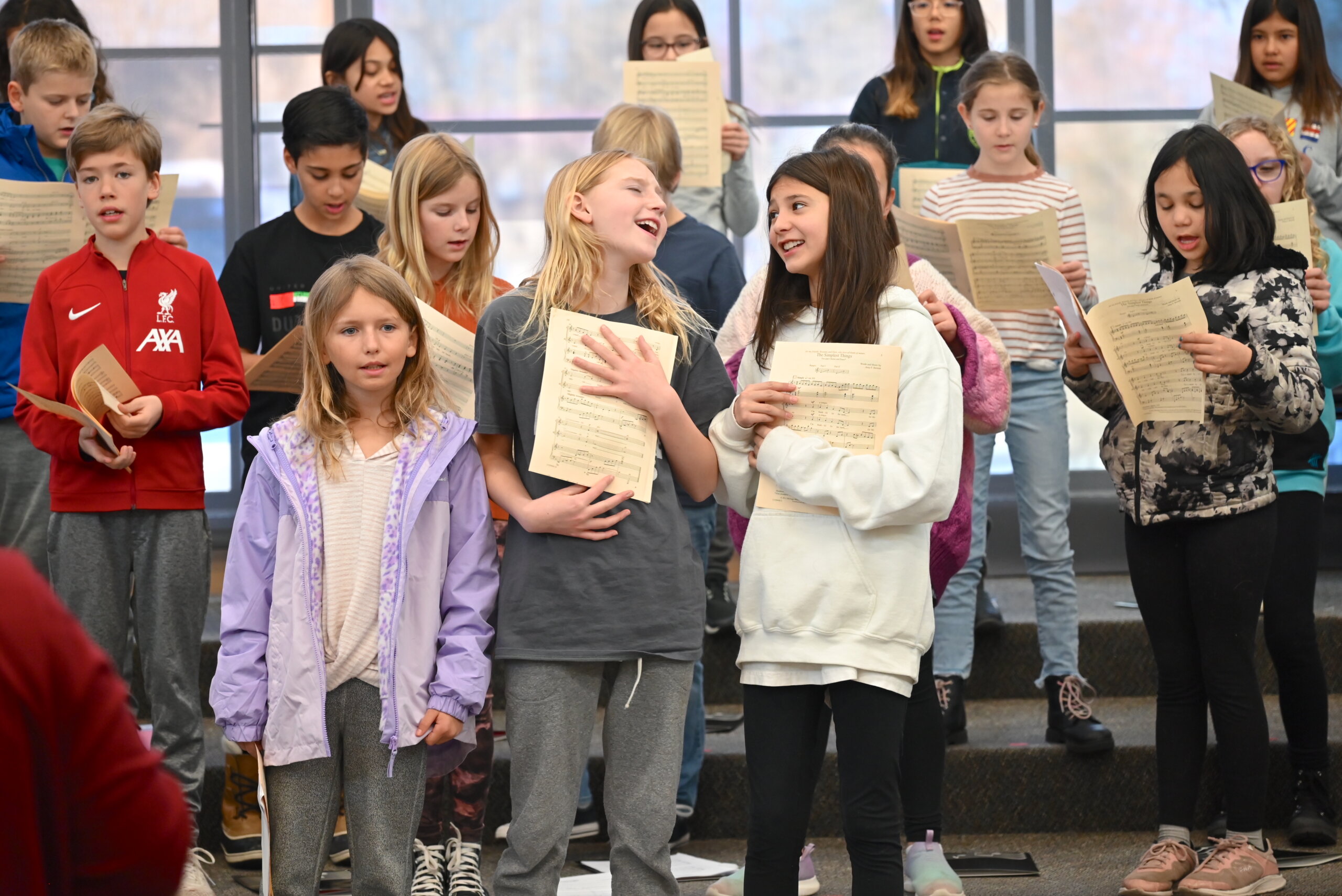If there is one word that can distill the essence of Colorado Academy’s Lower School Music Program, that word is joy. From Pre-K through Grade Five, CA’s music teachers make it their mission to ensure that every child, in one way or another, has access to the joy that is music.
“At this level,” says music instructor Brenda Bartel, “music needs to be fun. When a child walks into our music classrooms, we want them to find something that they can truly enjoy.”
Fellow music instructor Nora Golden ’00 adds, “In any given class, at every age, our students are singing, dancing, playing instruments, playing games, gaining music literacy—all in developmentally appropriate ways. So, even if singing’s not your favorite, you know that there’s sure to be instrument playing or movement later on. That variety means that all kids can discover something they will take with them as they grow as students and musicians.”

If there is a second word that characterizes the program, it is togetherness.
“The ensemble aspect of the program—the community music-making and creating—is paramount for us,” says Golden. “The idea that you are making music with other people is huge, and it sets the stage for our musicians to continue participating as they move into the Middle and Upper Schools.”
Recounts Bartel, “When I arrived at CA six years ago, I was surprised to see Fourth and Fifth Graders who were so willing to sing, dance, and be creative together. It’s not something I’ve witnessed in many other places. I quickly learned that here, the idea of making music with your peers starts in Pre-K. CA’s program creates an environment that is safe for everyone to experiment and participate, and by the time they reach Fifth Grade, they’re naturals at it.”
Children as creators
The accessibility of joy—and the musical community it nourishes—in CA’s Lower School program is no accident. It has its roots in the well-known Orff Schulwerk approach, developed by the German composer Carl Orff and educator Gunild Keetman during the 1920s. Their philosophy of music education celebrates children’s innate imagination, playfulness, and experimentation, leveraging these as a way to develop musical skills and understand musical concepts. Children’s agency and creative freedom are core to this approach.
In the hands of Bartel and Golden, as well as Pre-K music teacher and flute instructor Isabella Ubertone, Orff Schulwerk comes alive through instruction that positions children as true creators, the authors of their own musical experiences.
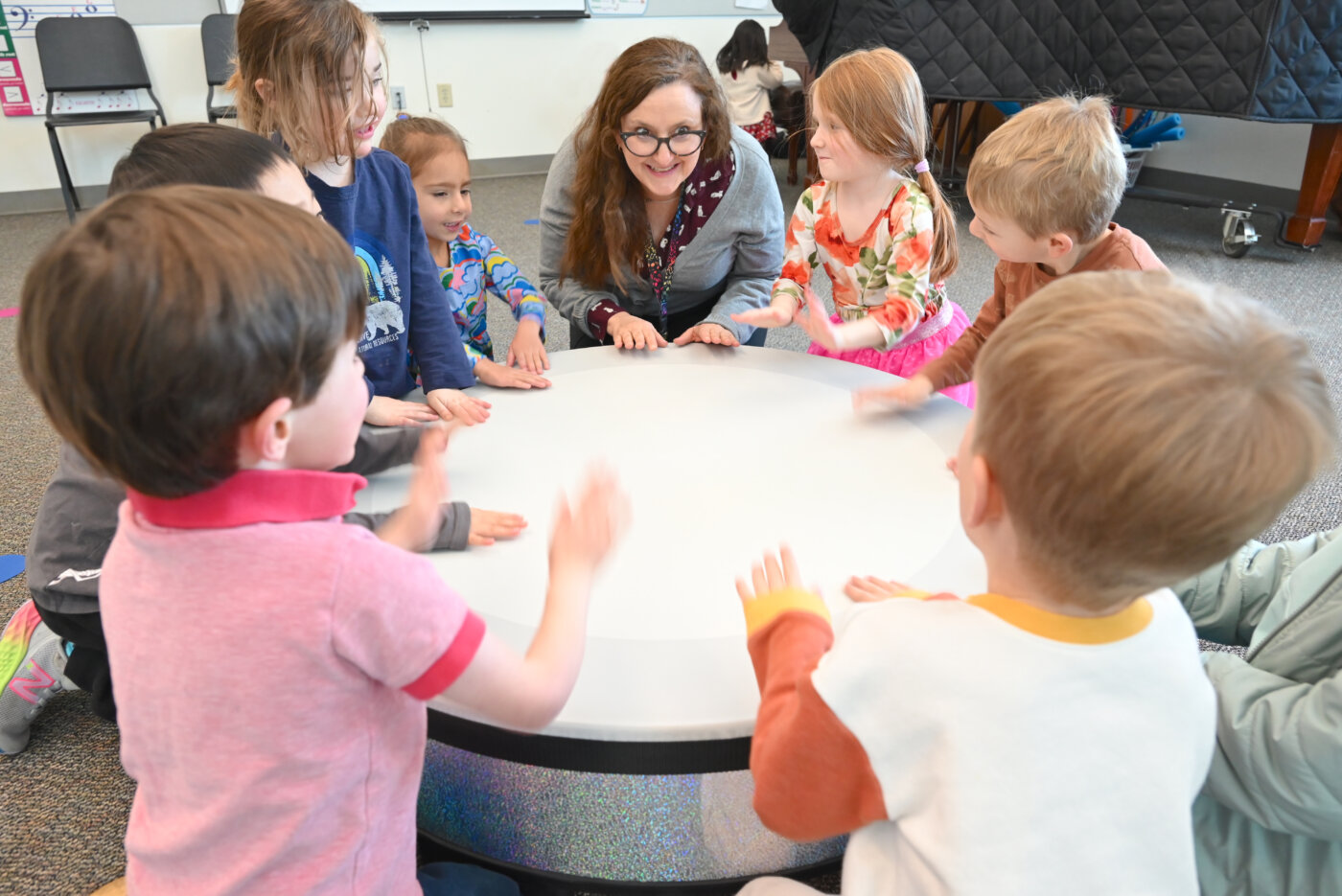
In Ubertone’s Pre-K music classroom, children improvise their own movements and make their own choices from a wide variety of instruments—including everything from small shakers to drums to ukuleles—as they devise their accompaniment for singing and storytelling. Ubertone may lead the way by choosing the song (the “chicken dance” was one recent selection), but the improvisation and execution are all the students’.
The obvious goal, of course, is becoming familiar with the sounds of the instruments and the movements they suggest. At the same time, as Golden explains, the real aim is to ensure that children see their “fingerprints” in the music they create.
“We give them the base of knowledge and the constraints of a piece of music,” she says, “but we then ask the questions, ‘How are you going to perform? Who’s going to start and end? Are there new ideas to include?’ These encourage them to ‘buy in’ to the end result, whether it is a musical performance or dance. They begin to believe, ‘I’m a musician.’”
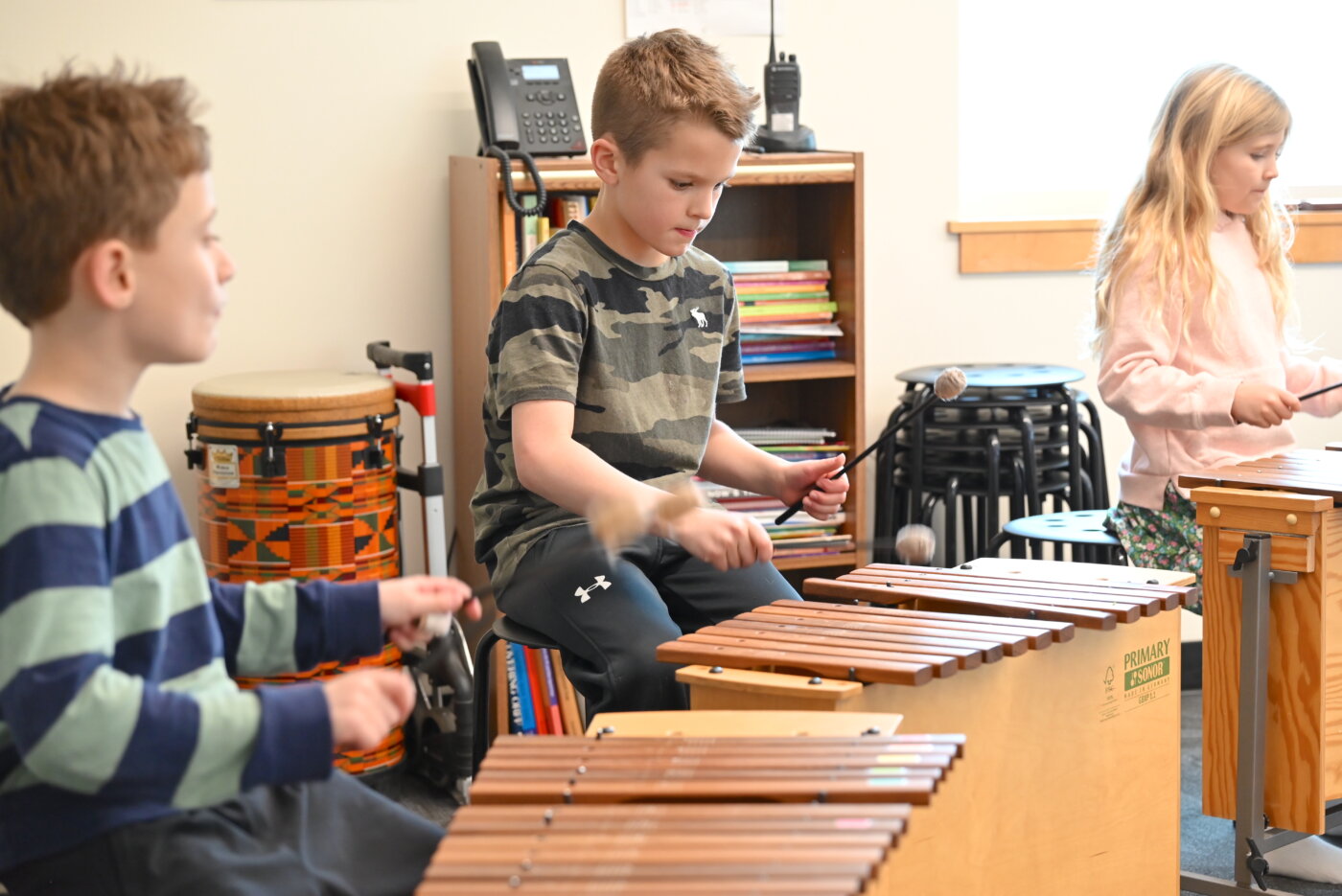
That basic approach remains the same as students move through the program. However, the music and the layers of any given performance become more complex, and to find success, musicians must work together to deploy more of the music and movement vocabulary and technique they learn in the music classroom.
By way of example, Bartel compares a Kindergarten to a First Grade music class.
“In Kindergarten, most of what we do is with the whole group. We work together, we move together—that’s how we do our creating and exploring. But in First Grade, I might give a smaller group of students a simple text, and have them invent their own movement to go with it. They answer a musical question in their own way, and then share it with the whole class.”
Or, adds Golden, Fourth Graders might be given a handful of possible notes or rhythms to improvise with on an instrument such as the recorder. “The result is theirs; they own it, they feel comfortable, and they feel safe in doing that.”
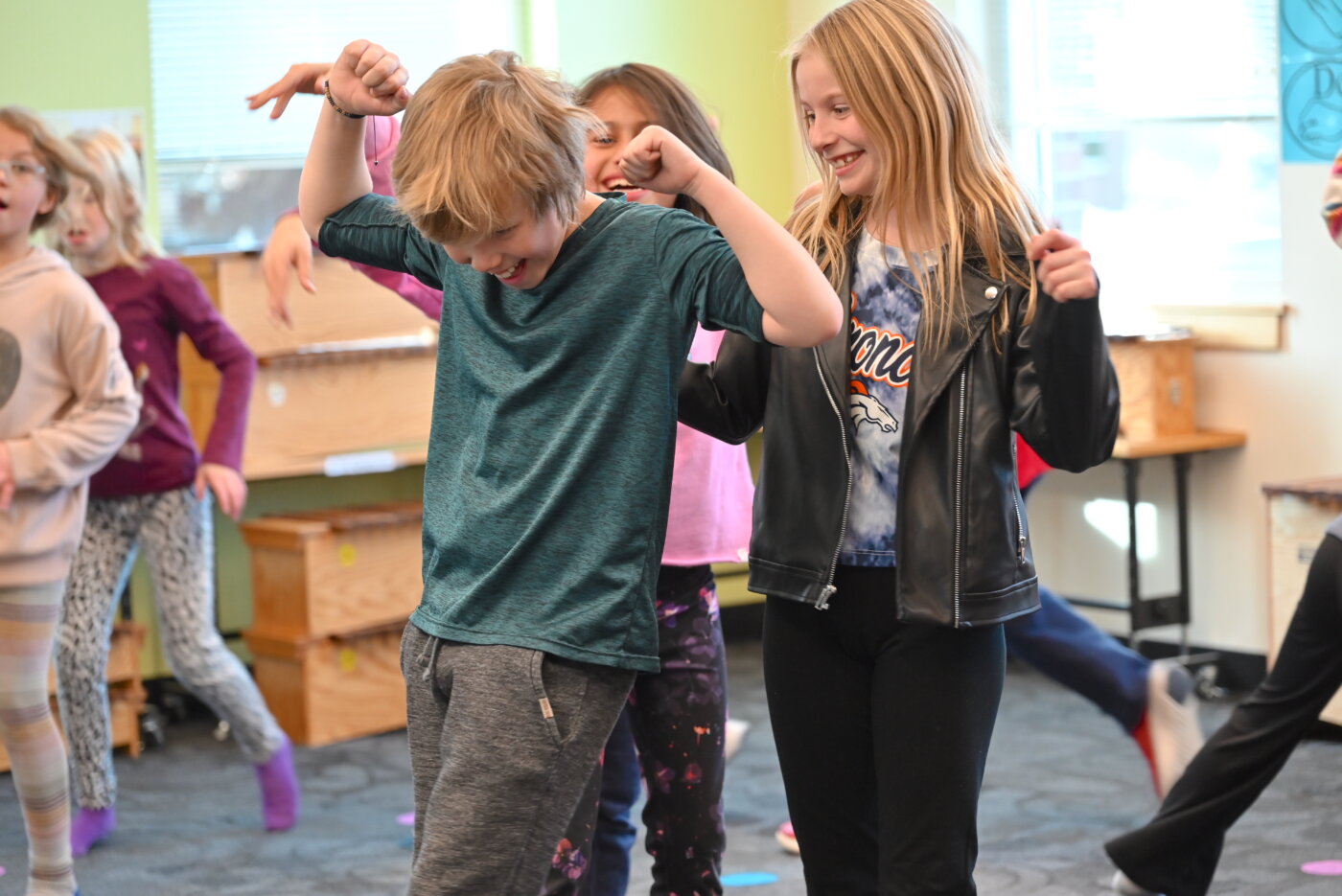
By Fourth and Fifth Grades, each of CA’s young musicians has gained technical experience with reading music and playing instruments like the recorder or xylophone. Each has also participated in imagining the movements, songs, and other elements that will make up the staged performances that showcase the learning that occurs throughout the year.
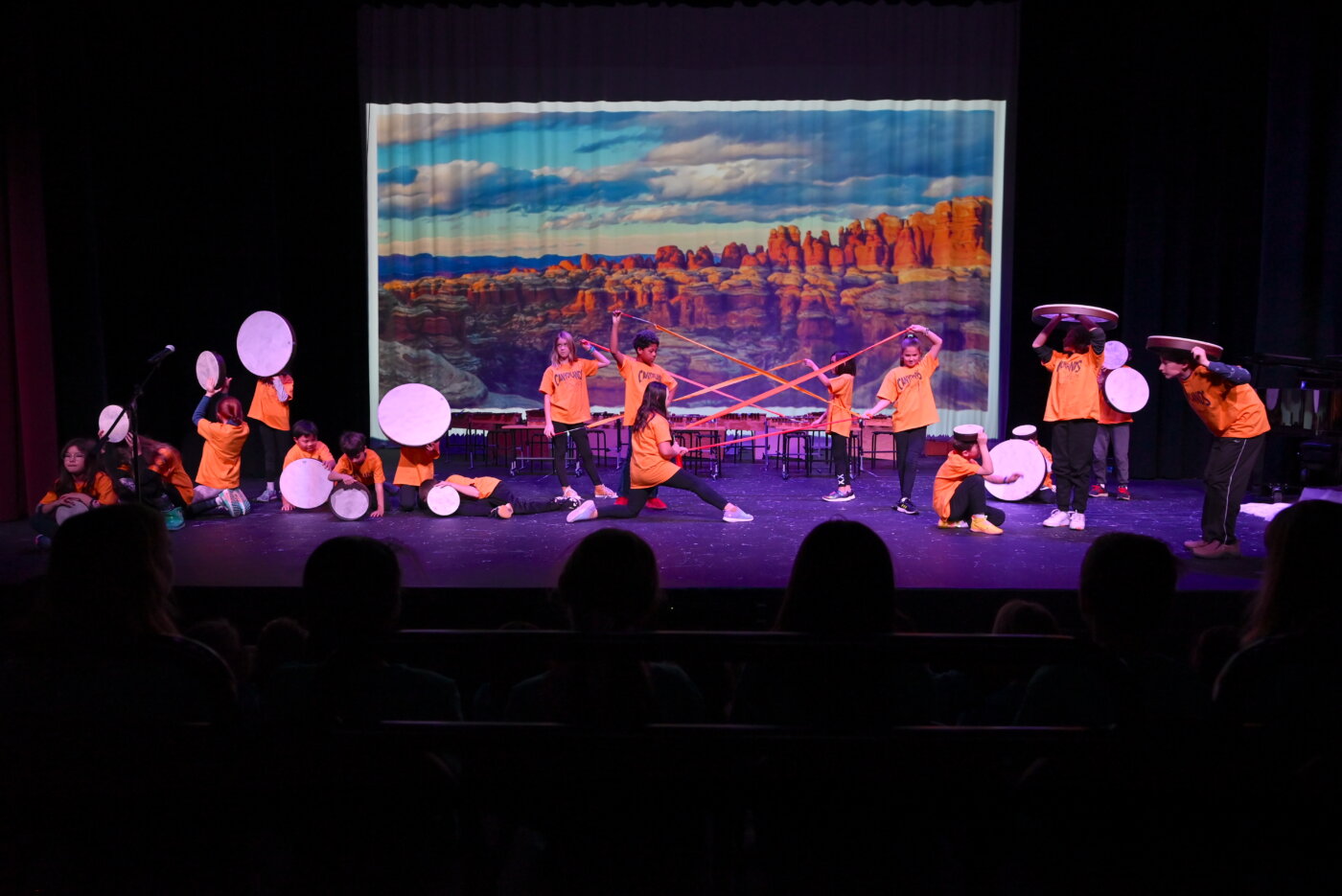
This year, Fourth Graders choreographed movement, poetry, and original artwork to illustrate the theme of their winter performance—the National Park System. And Fifth Graders are working on a new show built around the idea of a battle between elemental forces. Beginning with a percussion piece they learned together, the students are working to explore all the musical ways they can tell the story, Golden says.
“How can we convey to the audience that there is a battle between the sun and the wind? How can we communicate our message through all we have learned about playing music, movement, song, and dance?”
More specialization
There are numerous opportunities in the Lower School music program for students to go deeper, either by pursuing individual instrument instruction or joining an ensemble. These offerings are designed to expose children to the wider world of musical performance and give them a glimpse of what their experience could be like in the Middle and Upper Schools.
One such offering, the Lower School Choir, is attracting a growing number of students who are excited about becoming more involved in music at CA.
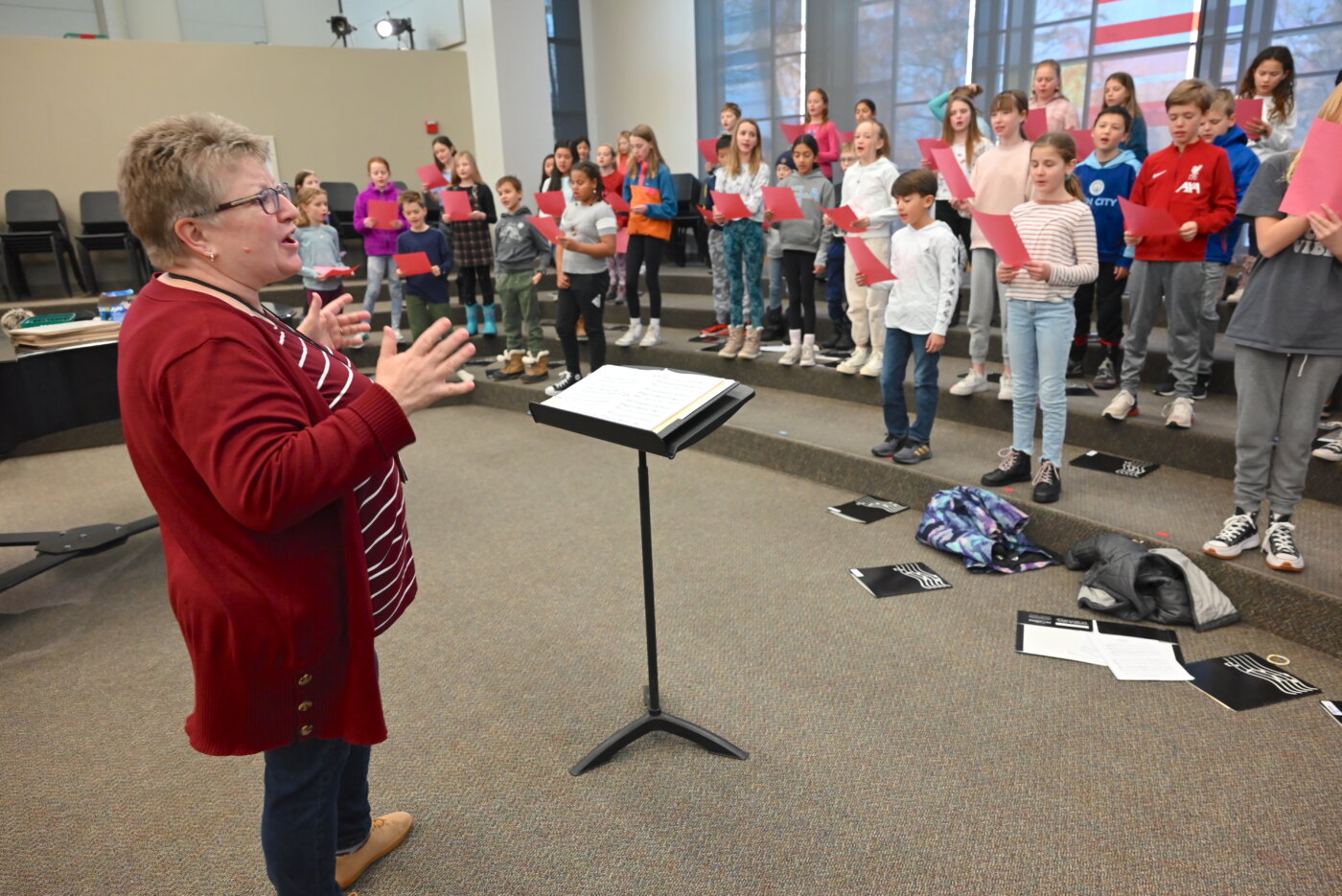
Led by Bartel, who is assisted on piano by Vocal Music Director Dr. Kevin Padworski, this ensemble is open to all Fourth and Fifth Grade students—no audition required. “My philosophy is: if you enjoy singing and you’re willing to commit to one rehearsal every six-day cycle, you’re in,” Bartel explains.
That approach has helped the Choir grow from about 30 students when the program first started five years ago to more than 60 today. The popularity of the ensemble has both thrilled and challenged Bartel.
“60 is a big number,” she acknowledges. “I was planning on capping this group at 50 or 55 singers. But when you have more and more children asking to join, how can you say no?”
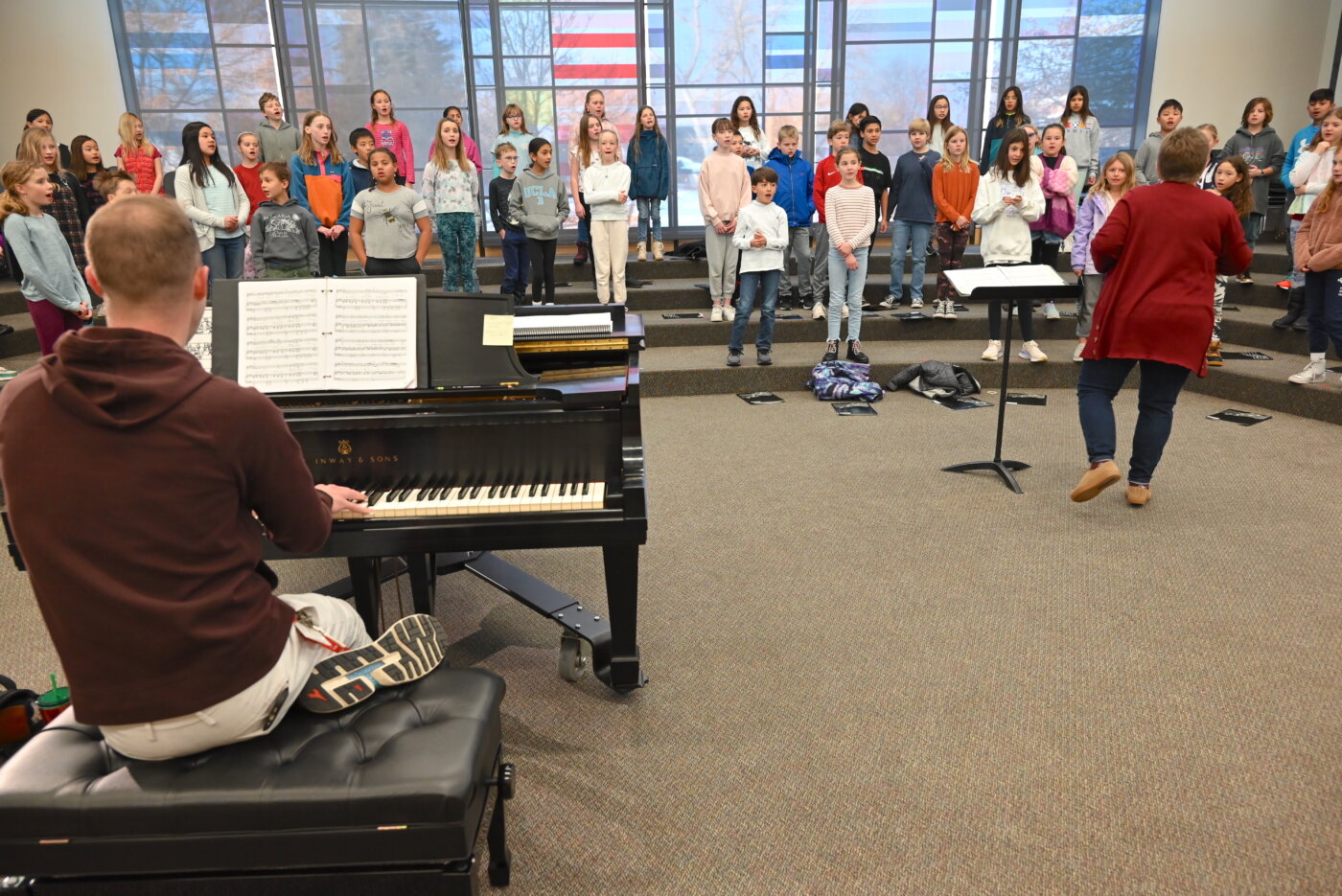
While the large size of the Choir means that rehearsals must often take place in two rooms, it also has its advantages. The sound, for one thing, is impressive.
“With this size group,” says Bartel, “we have the opportunity to create something really special in a choral setting. These musicians are learning how to sing in harmony—it’s so different from being in music class.”
With Padworski as piano accompanist and occasional conductor, Bartel notes, the Fourth and Fifth Graders are gaining experience that will pay off as they move on at CA.
“Kevin is an incredible director,” Bartel states. “What he can do with choirs is amazing. If my students get to know him now, I feel like that will only nurture their love of singing and encourage them to stay involved later on. That’s the biggest thing I hope the Lower School Choir can achieve.”

Adds Golden, “That continuity really underscores the value of CA’s Pre-K–12 model.”
Younger students, too, have their own opportunities to specialize. In 2021, CA began offering group piano lessons for all First Graders. Taught by piano instructor Maria Wietrzynska, these small-group sessions, with about eight students at a time, aim to “level the playing field,” according to Bartel, offering all children the chance to experience instrument lessons like those available in CA’s extensive private lesson program.
“We wanted everyone to feel what it’s like to learn an instrument,” says Bartel. “In our music classrooms, we offer a general music education. But what if there’s a child who discovers a passion for piano, or goes from that experience to learning a string or wind instrument? In fact, quite a few students have pursued that path and continued on with private lessons.”
The private lesson program itself serves nearly 50% of CA’s student population, and it is now more accessible than ever, with scholarships available to support families considering this option. The program, in turn, feeds the Lower School Orchestra, a showcase for those students, mostly string players, enrolled in private lessons either at CA or with an outside instructor.
These opportunities, just like daily classroom music instruction, are further examples of the commitment that drives the Lower School music program. As Golden puts it, “You are a musician. You are the creator of what we see and hear. How will you find joy in music, and how will you share it with the world?”
